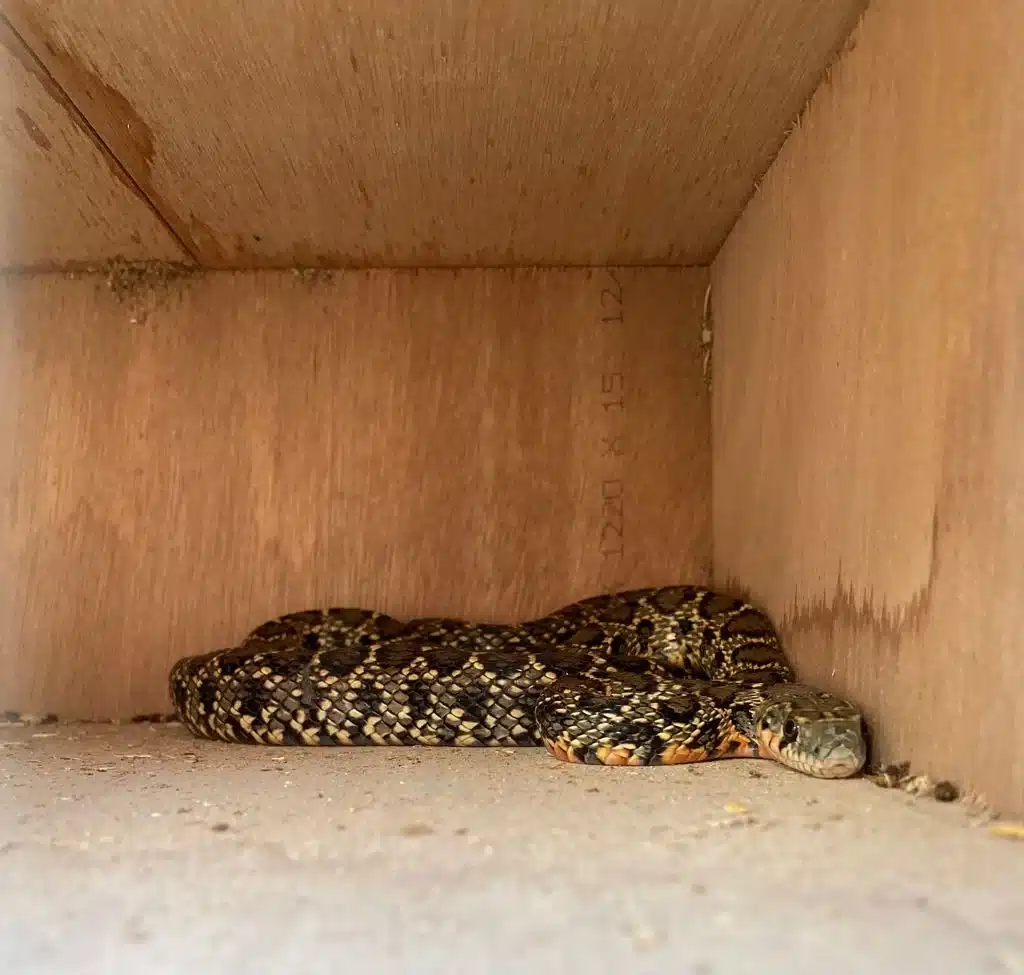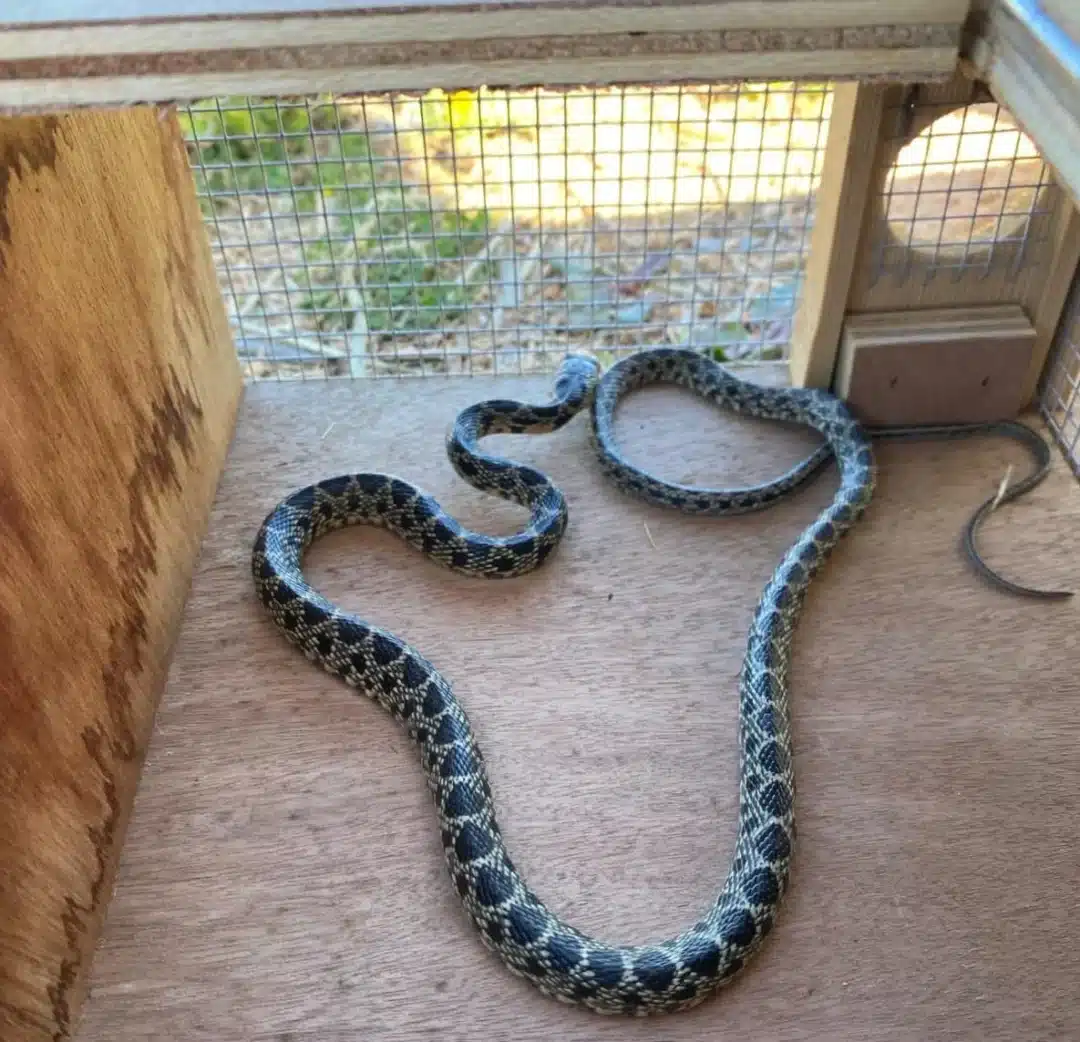Experts agree that the increase in horseshoe whip snakes (Hemorrhois hippocrepis) in Ibiza is one of the island’s major environmental concerns due to its impact on the ecosystem, particularly the threat it poses to the native Ibiza wall lizard (Podarcis pityusensis), which is its primary food source. The lizards, endemic to the Pityusic Islands, play a crucial role in maintaining ecological balance, and their decline could have serious consequences for local biodiversity.
The presence of these snakes on the island is mainly attributed to the accidental introduction of the species, likely through the transportation of olive trees from mainland Spain. Once established, they have thrived in Ibiza’s warm climate, finding plenty of food and few natural predators.
As encounters with these snakes become increasingly common, it is important for residents and visitors alike to understand their behaviour, how to react if they come across one, and, most importantly, what to do in the unlikely event of a bite.

Are horseshoe whip snakes dangerous to humans?
Despite their somewhat intimidating appearance, horseshoe whip snakes are not venomous and do not pose a significant threat to humans. They are generally non-aggressive and will only bite if they feel threatened or provoked. Most encounters with these snakes occur in rural areas, particularly in gardens, dry stone walls, and wooded regions. However, they have also been spotted in urban and residential areas, increasing the chances of human contact.
While the majority of bites result in little more than minor puncture wounds, there is one scenario in which a bite could become a medical concern.
Why a horseshoe whip snake bite can be serious
Horseshoe whip snakes have an extremely delicate and extensive set of teeth. Their maxilla is equipped with between 14 and 18 teeth, along with two large fangs. Additionally, they have between 9 and 10 teeth in the palatine bone, 15 to 20 in the pterygoid bone, and another 16 to 21 in the dentary bone. The exact number of teeth depends on the size and nature of the individual snake.
According to the Spanish Civil Guard’s environmental division (Seprona), the only serious risk from a bite by this type of snake occurs if one of its small, fine teeth becomes detached during the bite and enters the bloodstream or gets lodged under the skin.

For this reason, if a horseshoe whip snake bites you and you suspect that one of its teeth has broken off inside your body, you should go to the hospital and bring the serpent with you so that medical staff can count its teeth and determine whether any are missing.
This was precisely what happened in Seville last year when a person who had been bitten by a horseshoe whip snake arrived at the hospital. The medical team requested assistance from the Civil Guard and Seprona to count the specimen’s teeth and verify whether any had remained inside the victim’s body.
In the vast majority of cases, however, horseshoe whip snake bites heal without complications. Simple first aid measures, such as cleaning the wound with antiseptic and applying a sterile dressing, are usually sufficient to prevent infection.
First aid steps if you are bitten
If you or someone you are with is bitten by a horseshoe whip snake, follow these steps:
- Stay calm – These specimens are not venomous, and panic can increase heart rate, potentially spreading bacteria faster through the bloodstream.
- Gently clean the wound – Use soap and water or an antiseptic solution to cleanse the area and reduce the risk of infection.
- Apply pressure if there is bleeding – Use a clean cloth or bandage to stop any minor bleeding.
- Avoid sucking or cutting the wound – Unlike venomous serpent bites, there is no need for extreme measures, as there is no toxin involved.
- Monitor for signs of infection – If redness, swelling, or pus develops, seek medical attention.
- Check for broken teeth – If you suspect that a tooth may have been left under the skin, go to a medical facility and, if possible, take the snake with you for verification.
These snakes are harmless to humans
Herpetologist Enrique Ayllón assures that there is no reason to fear these reptiles, as the species present in Ibiza are neither dangerous nor venomous, and they are generally not aggressive towards humans. They typically try to escape when confronted and will only bite as a last resort when they feel trapped or in danger.

How to handle a horseshoe whip snake encounter
Given their impact on local wildlife, it is crucial to manage encounters with these snakes responsibly. The recommendation is clear: if you encounter a horseshoe whip snake, try to prevent it from escaping and capture it if possible. If you are unable to do so, there are two options:
- Kill it – Since this species is not protected, it is legal to eliminate them. However, this should be a last resort.
- Call emergency services (112) – Authorities can safely remove the ophidian and prevent further impact on Ibiza’s fragile ecosystem.
If you manage to capture it, the best approach is to place it in a secure container, such as:
- A box with no openings
- A bottle
- A fabric bag
- A pillowcase (these work surprisingly well as temporary snake containers)
Once secured, the snake should be handed over to environmental authorities, who can ensure its removal from the wild.
A growing challenge for Ibiza
The proliferation of horseshoe whip snakes in Ibiza is an ongoing concern for conservationists, as their presence threatens the survival of the island’s native lizard species. Various measures have been proposed to control their numbers, including organised removal efforts and public awareness campaigns.
In the meantime, educating residents and visitors about these snakes is essential. Understanding that they are not inherently dangerous to humans, but do pose a risk to local biodiversity, allows for responsible action when encountering them. By following the correct procedures, we can help mitigate their impact while ensuring that human encounters remain as safe and manageable as possible.




